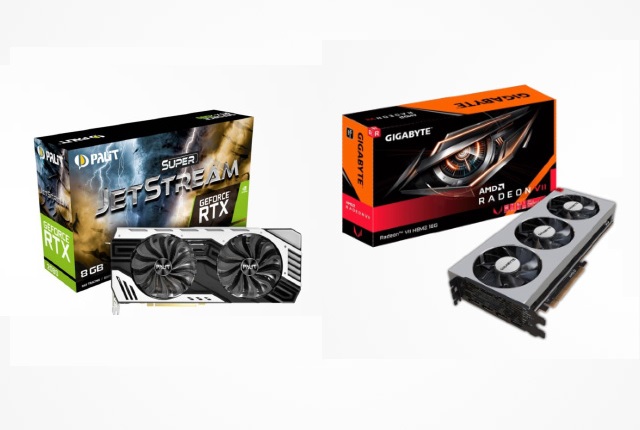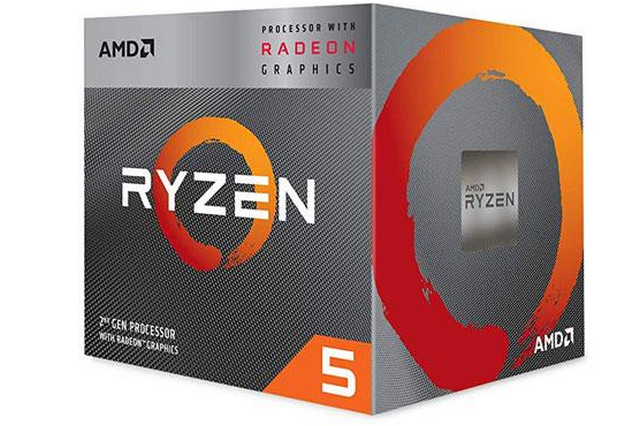What are the Key Differences Between CPU, GPU and APU?
Broadly speaking, the CPU takes care of application processing, while the GPU kicks in for all graphics-intensive workloads. An APU is the combination of the two, which means in theory, it should be able to do both jobs with aplomb. But is it really the magic potion that AMD would have us believe? Or is it just a marketing gimmick that doesn’t stand up to its promise in the real world? We will discuss just that in this article, but before we get to APUs, we’ll need to understand why such a solution was necessitated in the first place.
What is a CPU?
Often described as the ‘brain’ of a PC, the CPU is, quite possibly, the single-most crucial component in a computer. It is the part that performs all of the core processes in smart devices, including all the number crunching, information sequencing, and problem solving. Broadly speaking, this includes loading the operating system, running programs and applications, performing spreadsheet calculations, and more. Some noted microprocessor-makers for consumer devices include Intel, AMD, Qualcomm, Texas Instruments etc.
While early CPUs were spread over multiple chips that required larger die sizes and consumed massive amounts of power, modern technology has allowed researchers to bundle billions of transistors into single chips (hence the name ‘microprocessors’), thereby reducing the footprint and increasing efficiency. However, all-purpose microprocessors are still incapable of rendering graphics well enough to run high-end games or render 3D imagery. This is where specialized graphics processors, or GPUs, come in.
What is a GPU?
A GPU is responsible for spatial, images, videos, and 3D processing duties in smart devices like computers, smartphones, and tablets. These are specialized chips designed for heavy graphics workloads, like gaming or running professional CAD (Computer-aided Design) and CGI (Computer-generated Imagery) applications.
While consumer graphics chips, like AMD Radeon and Nvidia GeForce RTX, are tailored for gaming graphics, professional GPUs, like AMD’s Radeon Pro and Nvidia’s Quadro, are designed for high-end workstations. They are also often used for machine learning and were widely used for cryptocurrency mining in the early years of the bitcoin boom, resulting in an unnatural spike in their prices a few years ago.
What is an APU?
An APU is also technically a standard all-purpose microprocessor, but with one notable exception. It comes with an integrated on-board GPU that makes it better at graphics processing than traditional CPUs. Simply put, an APU is a microprocessor that includes both the CPU and GPU on a single chip.
The term, APU, was coined by AMD a few years ago when it launched its ‘Llano’ processors back in 2011, but the idea itself is quite old. It is worth noting that many of Intel’s low-end and mid-range CPUs also come with Integrated Graphics Processors (IGP). That said, the AMD APUs are much better at handling graphics-intensive workloads than those Intel chips.
What are the Benefits of an APU?
Integrating the graphics processor on the same chip as the application processor has multiple benefits pertaining to costs, power efficiency, easier setups, less driver updates, and more.
Cost: AMD’s APU chips are often a cheaper alternative for elaborate setups with separate CPU and GPUs chips with comparable performance, making them the perfect choice for folks on a budget. Efficiency: APUs are more power-efficient than dedicated graphics cards. The relatively low power consumption not only makes them easier on the pocket, but also better for the environment in the long run. Easier Setups and less Driver Updates: Dedicated GPUs often require additional hardware, including GPU coolers, which add to the cost of the setup. They also require frequent driver updates to work as intended. APUs are catch-all solutions that can be installed like any standard CPU, and generally don’t need to be updated as frequently as standalone graphics cards.
What are the Drawbacks of an APU?
As we mentioned already, an APU may work well for gamer on a shoestring budget, but will leave power users clamoring for more. To put is simply, here are the reasons why you might want to stay away from an all-in-one solution for your PC:
Lack of Raw Graphics Processing Power: As you’d have guessed by now, APUs do offer a great option for gamers on a budget, but cannot match the raw grunt of dedicated GPUs. More Expensive the regular AMD or Intel processors: Those looking to build basic PCs might find it cheaper to buy or build computers with entry-level CPUs from either AMD or Intel. If you don’t require graphics prowess, and Intel processor with integrated graphics might be a better option for the price.
APU vs GPU: Which is Better in Terms of Value?
While APUs are more power efficient and are often significantly cheaper than setups that include separate CPUs and GPUs, they just don’t measure up to dedicated graphics cards in terms of gaming or 3D rendering operations. That said, APUs are still a good compromise for most regular users, including casual gamers, who don’t need to perform graphics-intensive tasks on a regular basis. For serious gamers and professional CAD designers, high-end gaming PCs or workstations with dedicated graphics cards remain the best option. APUs offer much better gaming performance than integrated graphics found on Intel chips or the low-powered graphics solutions found on third-party motherboards, so you’re still likely to see a significant jump in performance by upgrading to these chips.
Latest AMD APUs
AMD’s current Ryzen APU lineup includes the Ryzen 3 3200G with Vega 8 graphics and the Ryzen 5 3400G with Vega 11 graphics. The company has also announced Ryzen 4000-series APUs that are said to be even better at gaming, but they are only available for OEMs and not for DIY enthusiasts. Be that as it may, you can check out the key tech specs of the 3000-series chips in the table below:
Similarly, we have also added separate list of CPUs and GPUs below for reference.
List of Latest CPUs
List of Latest GPUs
AMD APUs vs Dedicated GPUs: And the Winner is …
As mentioned already, whether you want to buy a PC with a dedicated graphics card or try out a cheaper alternative powered by an APU will depend on your budget and usage. If you’re a hardcore gamer, graphics designer or video editor, you’ll be better served by a high-end gaming PC or workstation with a standalone GPU. For most other users, a decent APU is all you’ll need in your computer to do all the basic everyday tasks and even indulge in some casual gaming without any issues. Of course, the all-in-one solutions will never quite make for the most powerful setup, but they should let you build a good entry-level gaming PC without breaking the bank. Besides, you can upgrade your APU-powered desktop by adding a dedicated GPU any time you want. So now that you know about AMD APUs and the kind of usage they are suited for, we hope that you’re better equipped to make that call before putting down your hard-earned cash.


